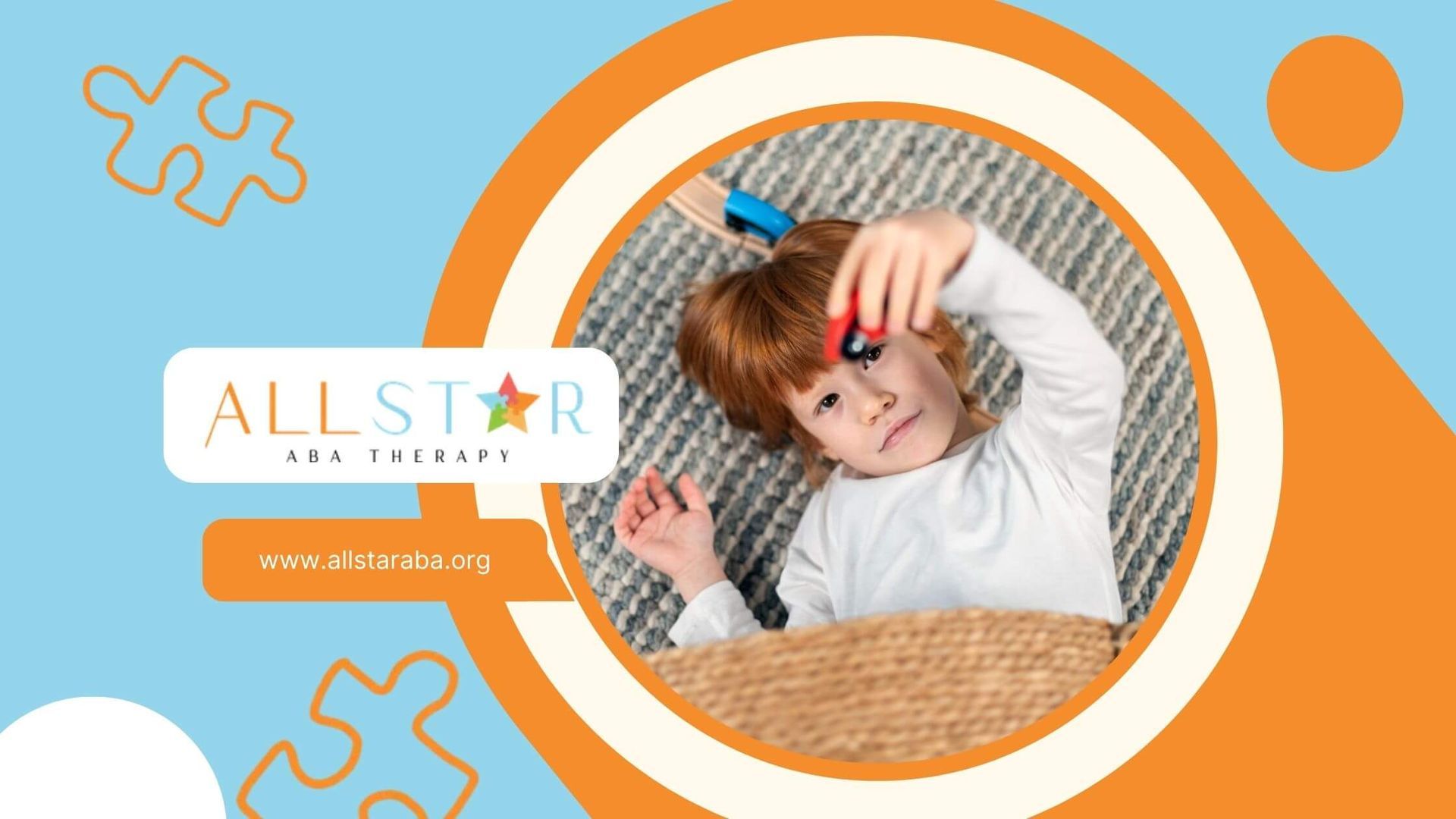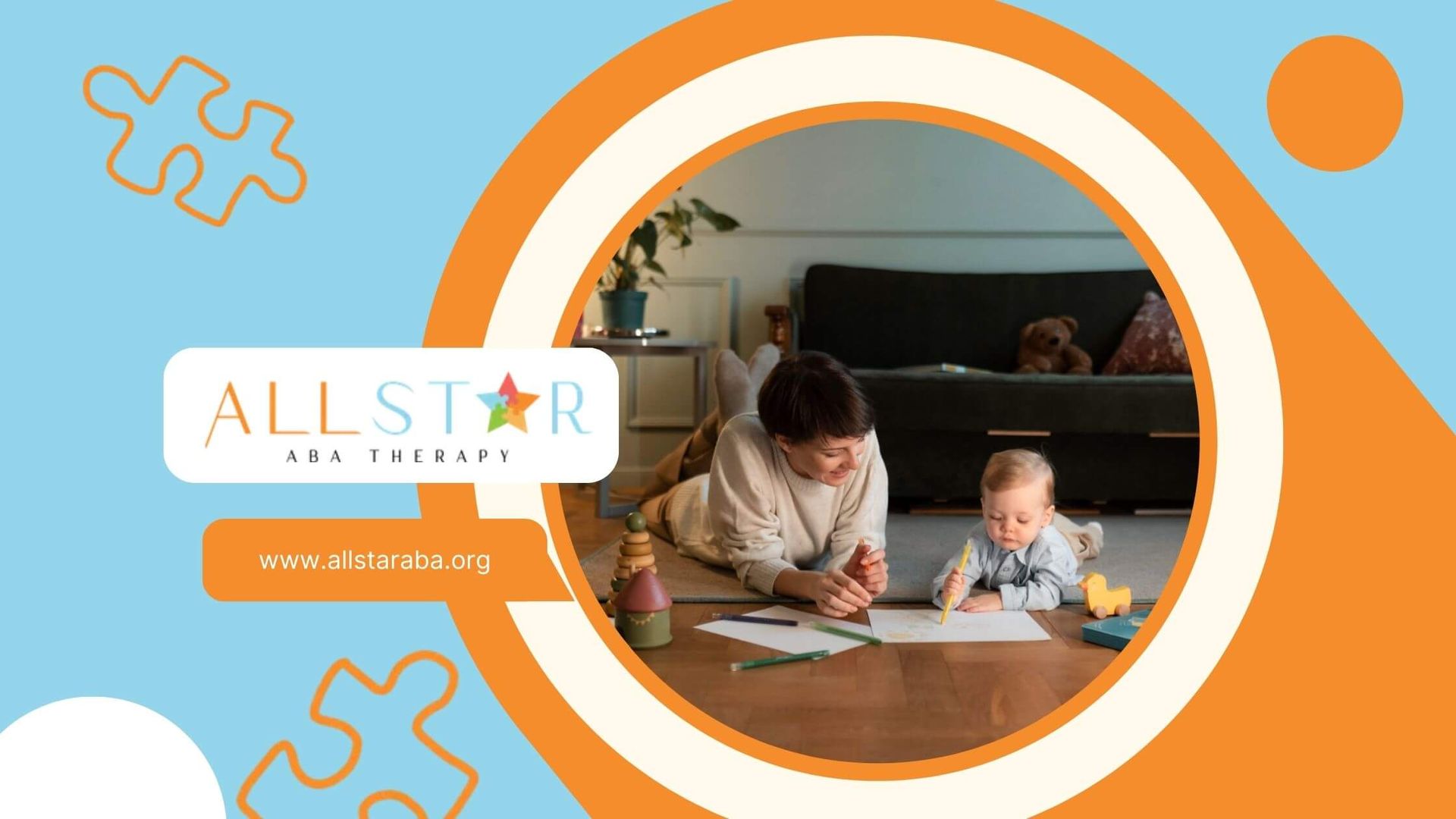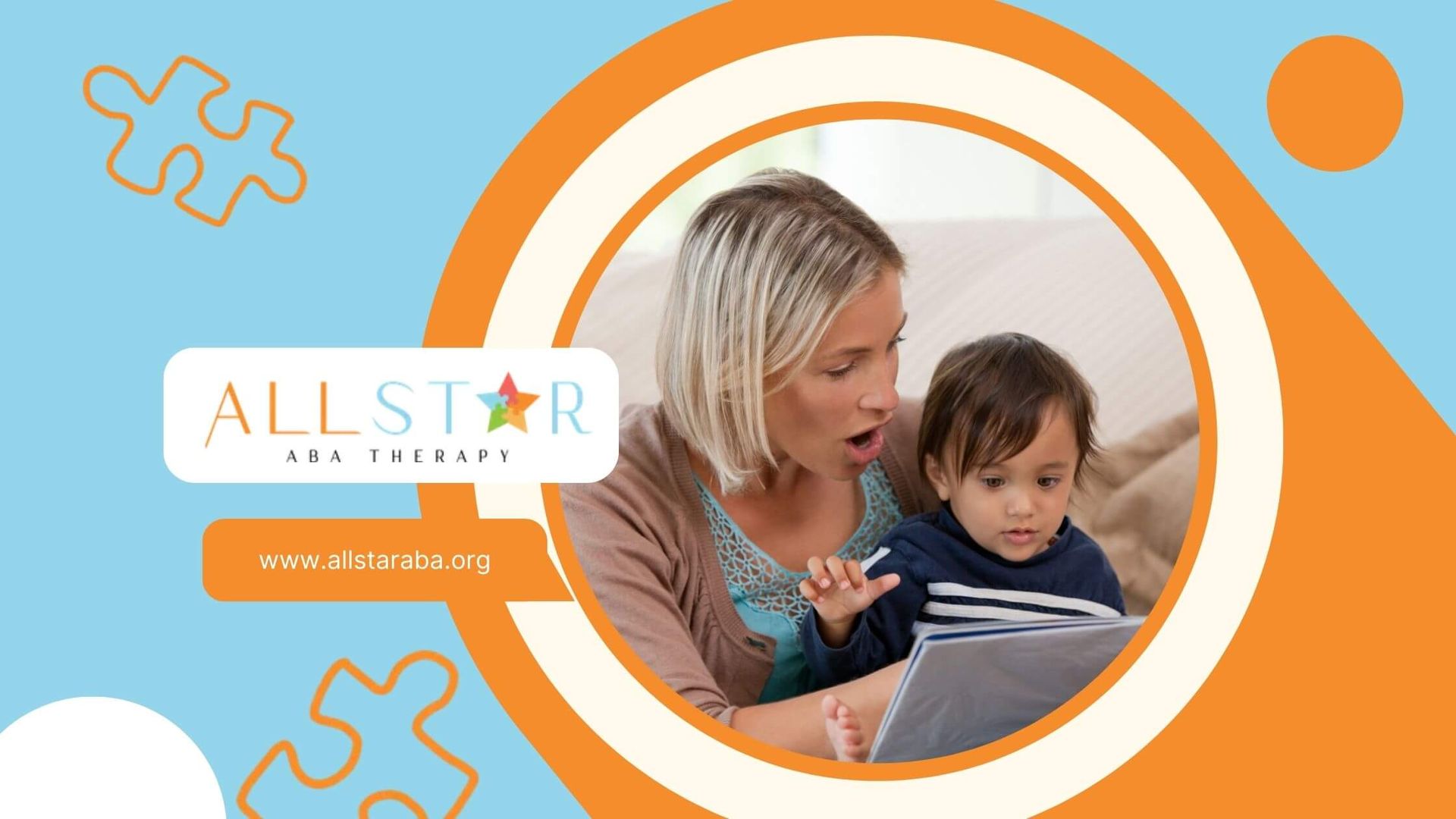New Paragraph
ABA Therapy: Best Age to Begin Treatment
Key Highlights
- Early intervention is crucial for children diagnosed with autism spectrum disorder.
- ABA therapy services aim to improve communication, behavior, and social skills in children with autism.
- The optimal age to start ABA therapy is between 0-2 years old for early intervention.
- ABA therapy can benefit children between 2-6 years old by enhancing language development and social interaction skills.
- ABA therapy can also help children over the age of six develop independent living skills.
- Positive reinforcement is a key principle of ABA therapy, focusing on rewarding desired behaviors.
Introduction
Being a parent of an autistic child can pose many challenges, including deciding on the appropriate therapies and the optimal age to start them. One highly recommended therapy for children with autism spectrum disorder is Applied Behavior Analysis (ABA) therapy. This type of therapy focuses on improving communication, behavior, and social skills in children with autism. Determining the optimal age to start ABA therapy is essential for maximizing the benefits and outcomes for children on the autism spectrum.
In this article, we will explore the importance of early intervention in autism and discuss when it is best to start ABA therapy for different age groups. We will also delve into the basics of ABA therapy, its core principles, and how it can be tailored to meet the individual needs of each child. Additionally, we will address common concerns and questions regarding starting ABA therapy late, its effectiveness for children with mild autism, and how to choose the right ABA therapist for your child.
Understanding the Basics of ABA Therapy
Applied Behavior Analysis (ABA) therapy is a form of therapy that focuses on behavior analysis to improve specific behaviors in individuals with autism spectrum disorder. ABA therapy is typically conducted one-on-one, either in a therapist's office or in the child's home. The goal of ABA therapy is to enhance communication skills, behavior, and social interaction abilities. The therapy utilizes techniques such as positive reinforcement to teach new skills and promote positive behaviors. ABA therapy also addresses daily living skills, such as toileting, grooming, and feeding, to help children with autism become more independent in their daily lives.
What Is ABA Therapy?
ABA therapy is a form of therapy that focuses on behavior analysis to improve specific behaviors in individuals with autism spectrum disorder. It is considered a highly effective and evidence-based treatment for autism. ABA therapy utilizes principles of behavior analysis to identify and target behaviors that need improvement. By breaking down complex skills into smaller, manageable steps, ABA therapy provides individuals with autism the opportunity to learn new skills and behaviors.
Positive reinforcement is a key component of ABA therapy, where desired behaviors are rewarded to encourage their repetition. This positive reinforcement helps individuals with autism learn and generalize new skills. ABA therapy also provides learning opportunities in various settings, such as at home, school, or in the community, to ensure that the skills learned can be applied in different situations. Overall, ABA therapy offers a structured and individualized approach to address the unique needs of individuals with autism spectrum disorder.
Core Principles of ABA Therapy
ABA therapy is guided by core principles that focus on understanding and changing behavior. These principles include reinforcement, prompting, shaping, generalization, and maintenance. Reinforcement involves rewarding desired behaviors to increase their occurrence. Prompting assists individuals in performing tasks until they can do so independently. Shaping breaks down complex skills into smaller achievable steps. Generalization ensures that learned behaviors are applied in various settings, while maintenance aims to sustain behavior changes over time. These principles form the foundation of effective ABA therapy interventions.
The Importance of Early Intervention in Autism
Early intervention plays a crucial role in improving the outcomes for children with autism spectrum disorder. During the early years of a child's life, they go through critical periods of development, where their brain is highly sensitive to stimuli in their environment. This is the optimal time to introduce interventions like ABA therapy to maximize the child's potential for growth and development.
Recognizing Early Signs of Autism
Early intervention is key in addressing the challenges associated with autism spectrum disorder. Recognizing the early signs and symptoms of autism is essential for timely intervention. Some early signs of autism include delayed speech and language skills, limited social interactions, repetitive behaviors, and difficulty with transitions. If you notice any of these signs in your child, it is important to consult with a developmental pediatrician or other qualified healthcare professional. Early identification and intervention during critical periods of development can significantly improve long-term outcomes for children with autism.
How Early Intervention Shapes Long-term Outcomes
Early intervention has been shown to have significant benefits in shaping the long-term outcomes of children with autism. Research has demonstrated that starting interventions like ABA therapy at an early age can lead to improved cognitive, social, and language skills. Intervention during critical periods of development can help children with autism acquire and generalize new skills, ultimately improving their quality of life. Early intervention also helps address challenging behaviors early on, preventing them from becoming more ingrained over time. By equipping children with the necessary skills and support during their formative years, early intervention sets the foundation for future success and enhances their overall well-being.
Optimal Age Range for Starting ABA Therapy
The optimal age to start ABA therapy for children with autism spectrum disorder is within the range of 0-2 years old. This period is considered the most critical time for early intervention as research has shown that starting interventions during this time can significantly improve a child's long-term prognosis. During this age range, ABA therapy focuses on teaching basic skills such as eye contact, vocalization, and imitation. Additionally, ABA therapy addresses specific goals tailored to the individual needs of each child. For children between the ages of 2 and 6, ABA therapy helps further develop language skills, imitation, play skills, and social interactions necessary for success in school and daily life. Children over the age of six can still benefit from ABA therapy by focusing on developing independent living skills such as toileting, grooming, and feeding.
Research Insights on Early ABA Intervention
Research has consistently shown the positive impact of early ABA intervention for children with autism. Studies have found that starting ABA therapy early, between the ages of 0-2, yields the best results in terms of language development, social skills, and overall progress. A study conducted by Smith et al. (2015) showed that children who received early ABA intervention made significant improvements in their cognitive abilities and adaptive behavior compared to children who did not receive early intervention.
Another study by Dawson et al. (2010) found that children who started ABA therapy before the age of 5 had better long-term outcomes in terms of social communication, daily living skills, and reduced symptoms of autism.
Overall, research supports the notion that early intervention, particularly with ABA therapy, provides the best opportunity for positive outcomes and improved quality of life for children with autism.
| Study | Age Group | Key Findings |
|---|---|---|
| Smith et al. (2015) | 0-2 years old | Significant improvements in cognitive abilities and adaptive behavior |
| Dawson et al. (2010) | Before age 5 | Better outcomes in social communication, daily living skills, and reduced symptoms of autism |
Case Studies: Success Stories of Early Therapy
Numerous case studies have highlighted the success of early ABA therapy interventions in young children with autism. For example, a case study by Johnson et al. (2018) focused on a 3-year-old child who received intensive ABA therapy for 20 hours per week. The child showed significant improvements in communication, social skills, and independent living skills. Another case study by Peterson et al. (2016) documented the progress of a 4-year-old child who received ABA therapy for 30 hours per week. The child demonstrated significant improvements in language development, play skills, and daily living skills. These success stories highlight the positive impact of early ABA therapy and the potential for significant progress and growth in children with autism when intervention starts at a young age.
Tailoring ABA Therapy to Individual Needs
ABA therapy is highly individualized, meaning that it is tailored to meet the specific needs of each child. The process begins with an assessment conducted by a certified behavior analyst (BCBA) to evaluate the child's strengths, weaknesses, and areas of improvement. The BCBA works closely with the child and their family to create an individualized treatment plan that addresses their unique goals and challenges. This personalized approach ensures that the child receives the most effective and targeted intervention to promote their development and progress.
Assessing Your Child’s Needs
Assessing your child's needs is an important step in designing an effective ABA therapy plan. A qualified ABA therapist will conduct assessments to evaluate your child's current skills, areas of improvement, and necessary prerequisite skills. These assessments help create a baseline to track your child's progress throughout their therapy journey. The ABA therapist will use various assessment tools and techniques to gather information, such as direct observation, interviews with parents and caregivers, and standardized assessments. This comprehensive evaluation allows the ABA therapist to develop targeted goals and strategies tailored to your child's individual needs, ensuring that the therapy plan is effective and addresses their specific challenges.
Setting Personalized Goals in ABA Therapy
Setting personalized goals is a crucial aspect of ABA therapy. These goals are determined based on the child's individual needs, strengths, and areas for improvement. The goals in ABA therapy are specific, measurable, achievable, relevant, and time-bound (SMART). They target areas such as communication, social skills, behavior management, and daily living skills. The ABA therapist works closely with the child and their family to establish these goals and develop strategies to achieve them. The progress towards these goals is continuously monitored and assessed by the ABA therapist, ensuring that the therapy plan remains effective and aligned with the child's evolving needs. By setting personalized goals, ABA therapy aims to enhance the child's overall functioning and quality of life, enabling them to thrive in various aspects of their life.
Overcoming Challenges in Early ABA Therapy
Engaging young learners in early ABA therapy can present challenges for parents and therapists. Parents may have concerns about their child's response to therapy, the amount of time required, and the impact of therapy on their daily routines. ABA therapy services address these concerns by providing a supportive and collaborative approach. Therapists work closely with parents to alleviate their concerns and develop strategies to enhance their child's engagement in therapy. By creating a structured and engaging environment, ABA therapy helps young learners develop essential skills while minimizing disruptions to their daily routines.
Addressing Parental Concerns and Expectations
When starting ABA therapy, parental concerns and expectations can play a significant role in the child's progress. It is important for family members to communicate their concerns and expectations to the child's therapist. The therapist can address these concerns by providing information, explaining the therapy process, and offering guidance and support. Open communication between parents and the child's therapist helps build trust and ensures that the therapy plan is aligned with the family's goals. It is important for parents to voice any concerns or questions they may have throughout the therapy journey, as their feedback and input are essential for tailoring the therapy to meet the child's individual needs.
Strategies for Engaging Young Learners
Engaging young learners in ABA therapy requires the use of specific strategies tailored to their age and developmental level. Here are some effective strategies for engaging young learners in ABA therapy:
- Break tasks down into small steps to make them more manageable and achievable.
- Use positive reinforcement, such as praise or small rewards, to motivate and reward desired behaviors.
- Use simple and clear commands to facilitate understanding and compliance.
- Incorporate play-based activities into therapy sessions to make learning fun and engaging.
- Create a structured and predictable environment to provide a sense of security and stability for the child.
Monitoring Progress and Adjusting Strategies
Monitoring the child's progress throughout ABA therapy is essential for ensuring the effectiveness of the intervention. ABA therapists closely track the child's progress by collecting data, conducting assessments, and regularly reviewing goals and objectives. This data-driven approach allows therapists to evaluate the child's response to therapy and make informed decisions regarding adjustments to strategies or goals. By monitoring progress, therapists can identify areas of strength and areas that require additional support. This ongoing assessment and adjustment process ensures that the child's therapy remains individualized and aligned with their specific needs, maximizing the benefits and outcomes of ABA therapy.
Key Indicators of Progress in ABA Therapy
ABA therapy aims to improve specific behaviors and skills in individuals with autism spectrum disorder. Key indicators of progress in ABA therapy include:
- Increased acquisition and generalization of targeted skills
- Reduction in challenging behaviors
- Improved communication and social interaction
- Development of independent living skills
- Increased engagement and motivation during therapy sessions
Behavior technicians, under the guidance of certified behavior analysts, observe and track these key indicators to assess the child's progress. Regular data collection and analysis allow therapists to measure the effectiveness of the therapy and make necessary adjustments to ensure continued progress. By focusing on these key indicators, ABA therapy strives to enhance the child's overall functioning and promote their independence and success.
When to Adjust the Therapy Plan
Adjusting the therapy plan is a natural part of the ABA therapy process. As the child progresses and achieves their goals, adjustments may be required to facilitate continued growth. ABA therapists regularly evaluate the child's progress and determine the next steps based on their individual needs and goals. Adjustments to the therapy plan may involve modifying strategies, introducing new goals, or increasing or decreasing the frequency or intensity of therapy sessions. The decision to adjust the therapy plan is made collaboratively between the ABA therapist, the child's family, and other professionals involved in the child's care. By adapting the therapy plan to the child's evolving needs, ABA therapy ensures that the child continues to make meaningful progress and reach their full potential.
Conclusion
In conclusion, understanding the optimal age for starting ABA therapy is crucial for maximizing its effectiveness in children with autism. Early intervention plays a significant role in shaping long-term outcomes and improving developmental progress. By recognizing early signs, tailoring therapy to individual needs, and monitoring progress closely, parents can help their child achieve success with ABA therapy. Addressing parental concerns, setting personalized goals, and engaging young learners are key strategies in overcoming challenges and ensuring a positive therapy experience. Choosing the right ABA therapist and starting therapy at the appropriate age can make a profound difference in a child's growth and development.
Frequently Asked Questions
What if I Start ABA Therapy Late?
It is never too late to start ABA therapy. While early intervention is often recommended, ABA therapy can be effective at any age. Older children can still benefit from the therapy and have the best chance for positive outcomes. Starting ABA therapy late is a common misconception, as the therapy can be tailored to meet the individual needs of children at any age.
Can ABA Therapy Help with Mild Autism?
Yes, ABA therapy can help children with mild autism. The therapy focuses on improving communication skills, social interaction, and specific skills necessary for daily functioning. ABA therapy can significantly enhance communication skills and promote functional communication in children with mild autism.
How to Choose the Right ABA Therapist?
When choosing an ABA therapist for your child, it is important to consider their qualifications and expertise. Look for a certified behavior analyst (BCBA) with experience in providing ABA therapy services. It is also essential to ensure that the therapist is the right fit for your child and your family. Consider factors such as their approach, communication style, and compatibility with your child's needs. Additionally, check if the ABA therapy services are covered by your private insurance to ensure access to the best possible care.
Need Support?
We're Here to Help!
Our experienced team is ready to assist you. Reach out today to discuss how we can support your child's development and well-being.
Get started with expert ABA therapy today.








